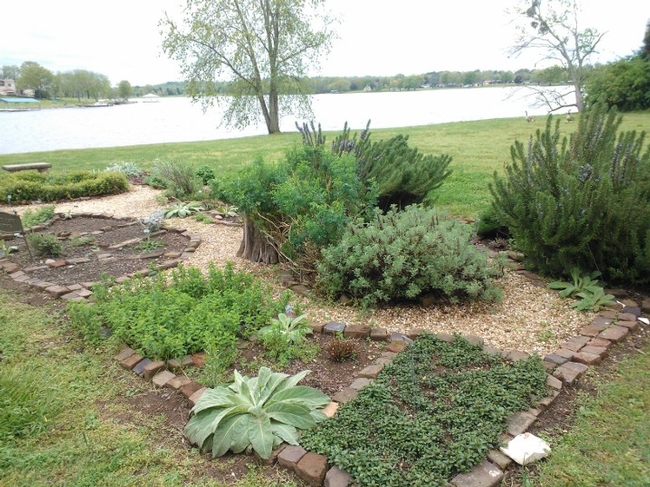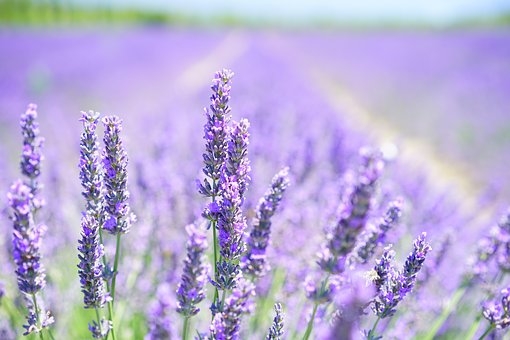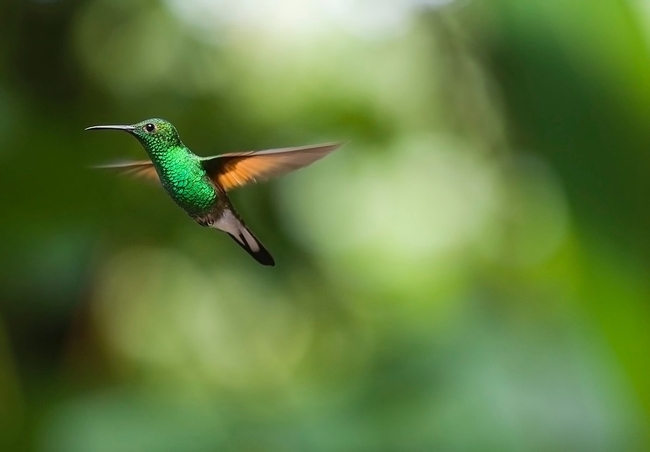- Author: Anne E Schellman
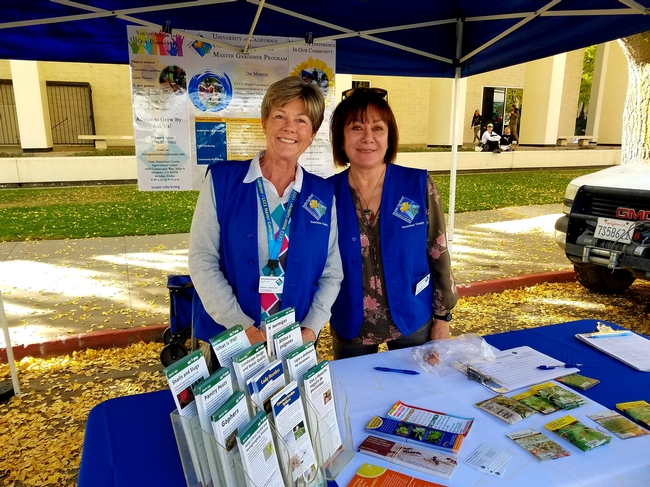
The UCCE Stanislaus County Master Gardener Program started in late 2018, and since then we've taught in-person and now online classes on topics like water conservation, growing herbs or vegetables, pollinator gardening, composting with worms, and many others. We hope these classes inspired you to save water, use plants to attract pollinators, and grow healthy food.
As of July, our program has taught 55 people how to become volunteers! Perhaps you've met one of our Master Gardeners at a local farmers market, the Stanislaus County fair, or other outdoor event. You may have spoken to them when you called, emailed, or visited our help desk with a question. We strive to answer your gardening and pest management questions with University research-based solutions in a timely and friendly manner.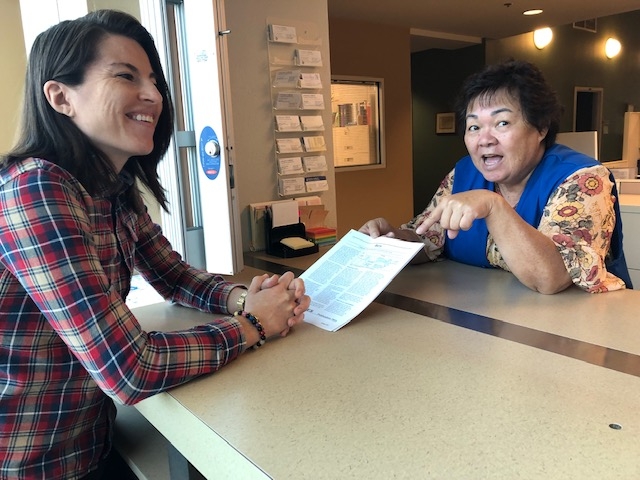
Has our program helped you solve a pest management problem, provided you with information on helpful topics through classes, or answered your gardening questions through email or a phone conversation?
If so, we hope you will consider donating on Big Dig Day on June 5, 2020. Your donation goes directly to support our local program.
To donate, visit https://ucanr.blackbaud-sites.com/MasterGardener and scroll to the bottom of the page to select the Stanislaus County Master Gardener Program. You can donate anytime. The campaign ends June 5 at midnight.
We thank you in advance for your support!

- Author: Anne E Schellman
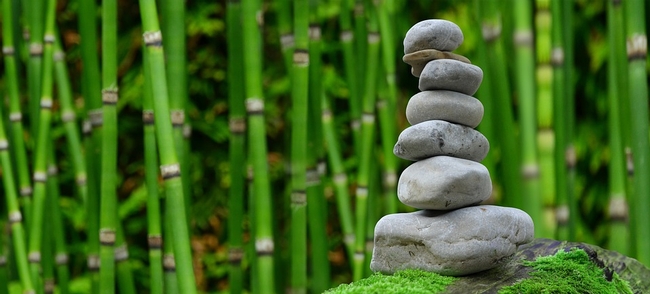
Although we can't see you at the local Farmers Market, our Harvest Hall location, or meet with you at the Stanislaus County Fair this year, we want you to know that we have an online presence and are still offering free classes!
Spring Container Vegetable Gardening Class-available now!
Thanks to those of you who joined us for our first online class. May is here, but it's not too late to start a vegetable garden. Watch on our new Youtube Channel at https://www.youtube.com/channel/UC_VH0Tcyqn2M6R8TneFa6gQ
Gardening with Pollinators
Now that many of us are sheltering-at-home, we may go outside more. You've probably seen a few pollinators buzzing about. Some of you wrote and asked if we planned to give a class on this topic. The answer is yes! Our next class will include how to attract bees, butterflies, and hummingbirds to your garden.
Save the date of May 26, 2020. Registration information coming soon.
Growing Culinary Herbs
Normally when teaching this class, we do a “show and smell” that allows everyone to touch and breathe in the aromas of these herbs. However, since we can't do this, the next best thing is to have a presentation with lots of great photos that describe the herbs and how to use them. We have a class planned for June.
Fall Container Vegetable Gardening
Once your spring vegetable garden is done, it's time to replace it with fall vegetables! Join us to learn about the vegetables that grow well during cool weather and how to care for them. This class will happen is August.
If you don't see a class you are looking for, or are excited about one of the classes below, please comment below, or contact us on our Facebook page. You can also send us an email to ucmgstanislaus@ucanr.edu
- Author: Cheryl A. Wilen
Nurseries and garden centers often sell a wide range of plants for use in gardens and landscapes. As a consumer, you may manage a complex array of different landscape plantings, including woody trees and shrubs, woody ground cover beds, annual flower beds, herbaceous perennial beds, and mixed plantings. This complexity often makes weed management difficult. An integrated approach is the most economical and efficient way to control weeds, so knowing strategies for managing weeds in a variety of landscapes can help.
Woody Trees and Shrub Beds
Control perennial weeds before planting, although weed control can also be done after planting. Densely planted areas will reduce weeds. Geotextile (landscape) fabrics rather than black plastic used with a shallow layer of mulch will keep weeds from emerging. If you mulch without a geotextile base, the mulch layer must be thicker to prevent weed emergence.
If needed, you can use a preemergence herbicide to control annual weeds and supplement with hand weeding and spot applications of postemergence herbicides for weeds that are not well-controlled by hand weeding, such as perennial grasses.
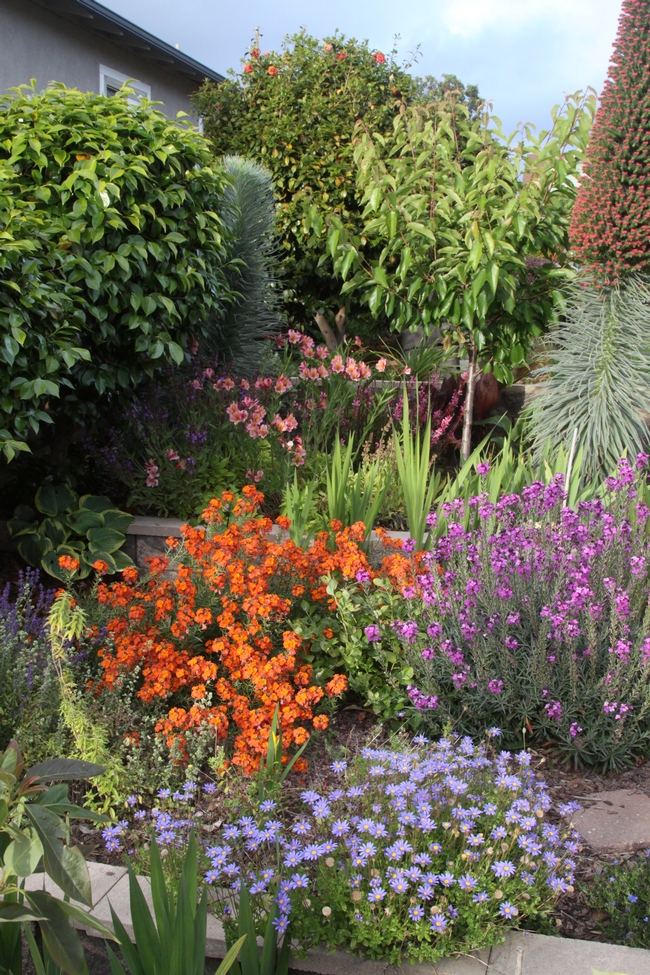
Woody Ground Cover Beds
Mature, woody ground cover beds should exclude most weeds; however, when ground cover is just establishing, weed growth is likely. Perennial weeds must be controlled before planting, although perennial grasses may be selectively controlled after planting with a grass-selective herbicide like sethoxydim (Grass-Getter). Annual weeds may be controlled with mulch plus a preemergence herbicide but rooting of stolons in new plantings may be affected. You will need to supplement with some hand weeding.
Annual Flower Beds
A dense planting in annual flower beds will help shade out and compete with many weeds. Flower species should be carefully selected for weed management compatibility. Periodic cultivation at 3- to 4-week intervals and between flower beds plant rotations will also suppress weeds. Perennial weeds must be controlled before planting. Annual weeds can be controlled with mulches, preemergence herbicides, frequent cultivation, and/or hand weeding. Control perennial grasses with grass-selective herbicides like clethodim, sethoxydim, or fluazifop. Avoid nonselective herbicides in annual flower beds after planting.
Herbaceous Perennial Beds
Weed management options in herbaceous perennial beds are similar to those for annual flowers, except that it is more important to eradicate perennial weeds as there will be no opportunity to cultivate or renovate the bed for several years; and fewer species are included on herbicide labels. Geotextiles may be used in these types of plantings. Manage weeds with mulches and supplement with hand weeding. If needed, use preemergence herbicides after hand weeding.
Mixed Plantings of Woody and Herbaceous Plants
Weed management in mixed plantings is complex because of the diversity of species. Different areas of the bed could receive different weed treatments. Site preparation is critical because post-plant herbicide choices are few. Plant the woody species first and control perennial weeds in the first two growing seasons, then introduce the herbaceous species. Plant close together to shade the soil. Group plants within the bed that will receive similar weed management programs.
In most landscape situations, herbicides should not normally be needed by home gardeners. Mulching, removal by hand, and proper irrigation (pattern and amount of water) are sufficient in most cases. Find more information in the UC IPM Pest Notes: Weed Management in Landscapes.
[Originally published as "Managing Weeds in Landscapes" published in the Fall 2018 issue of the Retail Nursery and Garden Center IPM News.]
- Author: Anne E Schellman
Stanislaus County herb gardening enthusiasts attended a free class on Thursday, April 11, 2019 from 6:00-7:30 p.m. from the UCCE Master Gardeners.
Attendees learned the basics on how to grow herbs from seed or transplant, and how to recognize various herbs by scent and sight by looking at examples. See if you know the answers to this "Pop Quiz" given during class:
Question#1: "What is the difference between an herb and a spice?"
Question#2: "Can you name a plant that is both an herb and a spice?"
Answer#1: The herb is the leafy part of the plant, while a spice may be the bark, seeds, or plant roots (cinnamon, mustard, or ginger).
Answer#2: Cilantro is both an herb and a spice (coriander).
Here are a few other fun facts discussed during the class:
- If you want a continuous supply of annual herbs like basil, dill, and cilantro, plant from seed every 2 weeks during the growing season.
- Tiger swallowtail butterfly caterpillars eat dill and fennel.
- You can propagate some leafy herbs by pulling off the bottom leaves of a stalk and placing them in water (mints, lemon balm).
- Chamomile and chive seeds need light to germinate. Sprinkle them on top of the soil and lightly water.
- Spearmint, peppermint, and lemon balm can quickly take over a garden space. Keep them contained in pots.
- Fennel is an invasive weed that can cause economic damage to agriculture and the environment. Avoid planting if you live around farms or open spaces.
- Pests also like herbs! If you have damage on your plants, bring in a sample to the UCCE Master Gardeners for help.
Future Events
How to Select, Plant, & Prune Landscape TreesSaturday, April 27, 2019 9:00 am to noon ($10) register now! http://ucanr.edu/trees2019
Coming This Summer and Fall
Low Water Landscaping
Pest Management In & Around the Home
Attracting Pollinators to Your Garden
Fall Vegetable Gardening for Beginners
Please visit http://ucanr.edu/scmg to see class updates.
- Author: Anne E Schellman
The University of California Cooperative Extension (UCCE) Master Gardener Program is planning exciting courses for the public for spring, summer, and fall of 2019! Two classes are happening next month:
- April 11, Growing Herbs for Beginners
- April 29, Planting the Right Tree or Shrub for your Landscape Workshop
Summer & Fall Classes
- Pest Management in and Around the Landscape Class
- Fall Vegetable Gardening Class
- Gardening for Pollinators
- Low-Water Use Landscaping
- Vegetable Gardening for Absolute Beginners
- How to Save Vegetable Seeds
Signing up for Classes and Workshops
You can register for the Growing Herbs for Beginners Class now at http://ucanr.edu/herbs2019 or call Anne Schellman at (209) 525-6800 to reserve your space. Registration for Planting the Right Tree or Shrub for Your Landscape Workshop will cost $10 and is limited to 25 people. This post will be updated as classes are available for registration online.
Follow us on Facebook or twitter for announcements about class @ucmgstanislaus. You can also visit our Classes and Workshops page for updates. https://ucanr.edu/sites/stancountymg/Classes/
Links to Helpful Pages
Who are the UCCE Master Gardeners? https://ucanr.edu/sites/stancountymg/
How do I apply for the Program? https://ucanr.edu/sites/stancountymg/Become_a_UCCE_MG/


